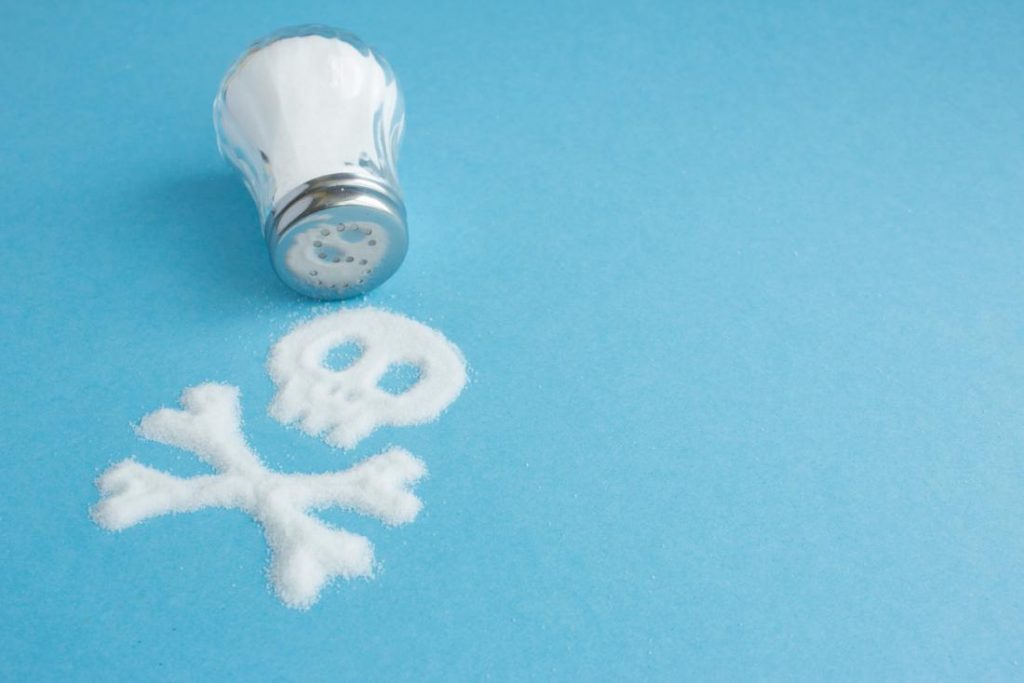
Sodium is a mineral that is integral to the basic function of our bodies, and we would die if we completely-eliminated sodium from our diets. However, too-much sodium can contribute to a wide range of ailments and chronic diseases, and sodium is also one of the leading, underlying causes of death in the United States.
Health Effects
While we need a little bit of sodium to stay hydrated, excessive amounts can cause dehydration. Sodium levels need to be regulated in the bloodstream, and when levels become too-high, water is extracted from cells in order to achieve balance. This causes all kinds of problems at the cellular level, and it also contributes to water retention despite the fact that we are literally dehydrating. Additionally, too-much sodium places stress on the kidneys and can lead to the formation of kidney stones as well as the development of kidney disease or even organ failure. Excess sodium raises also raises blood pressure, causes arteries to stiffen and is a leading contributor to heart disease.
Too-much sodium can also degrade the strength of our bones and lead to osteoporosis. It also contributes to calcification in joints. High levels of sodium can also disrupt the balance of chemicals in the brain, interfere with our metabolism and even contribute to bouts of chronic fatigue. There are literally dozens of other problems associated with consuming too-much sodium too-often, and this is something that all of us should take to heart.
What is a Good Level
Officials suggest that adults should try to limit their sodium intake to about 2000-2300mg per day. However, the body doesn’t usually require that much unless you’re engaged in physical activity that causes a depletion of electrolytes. Anything above 2500mg is considered to be too-much, and we start getting into dangerous levels once we consume 3000mg.
Signs of High Levels
The first sign of too much sodium in the body is that we get really, really thirsty. This is because the body needs a lot of water to dilute sodium concentrations and flush the excess out of the system. Unfortunately, a lot of that water won’t be absorbed properly without a little bit of potassium, so you should eat a banana or take a supplement as you consume additional fluids.
The next sign is that swelling will start to develop in random places. This happens as the body starts to draw water out of cells in order to create emergency reserve supplies that it can release into the bloodstream. Edema can also occur in parts of the body where high concentrations of sodium have settled or been deposited.
Another indication of sodium-overload is that the mind becomes foggy and it’s difficult to focus, concentrate and maintain a good sense of well-being. These experiences often get more-intense as sodium levels increase, and they tend to subside as they decrease. However, serious damage can occur during the intervening time, particularly if someone is exposed to dangerous levels of sodium on a regular basis.
Keep in mind that signs aren’t always present or apparent, and sometimes we don’t know that we have a problem until something catastrophic occurs. Consequently, it’s important to be mindful of our sodium intake, read labels, and make dietary adjustments as necessary. It’s also important to build up our emergency food supplies and stockpiles with sodium in mind as well.
While this takes a little bit of effort and commitment, keeping sodium levels in our bodies as nominal as possible is one of the best things that we can do for our health now, as well as during a crisis.
